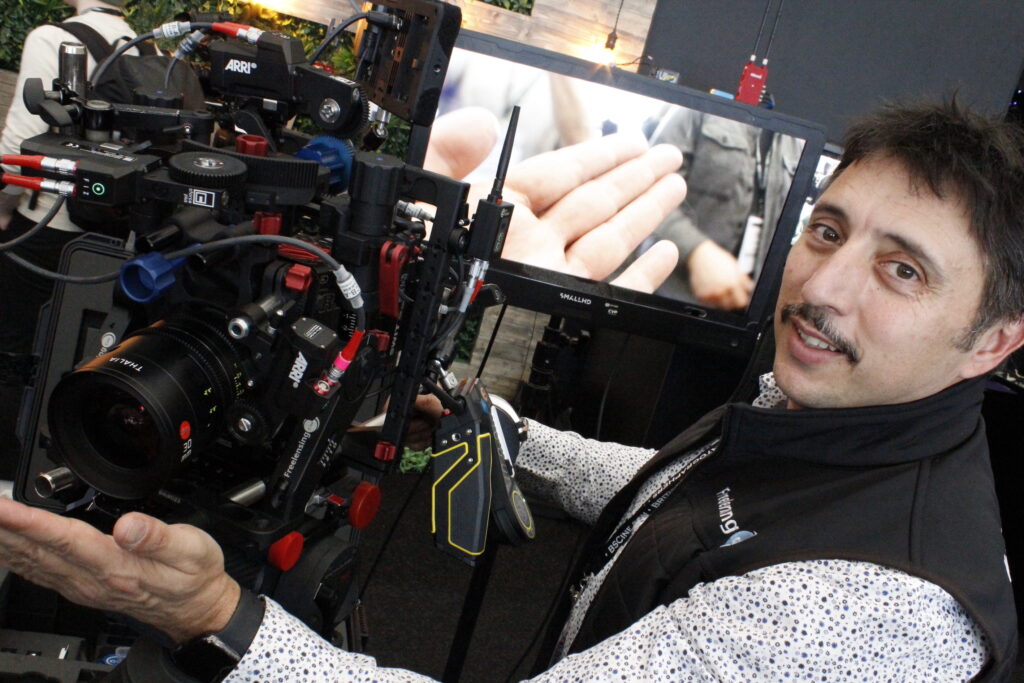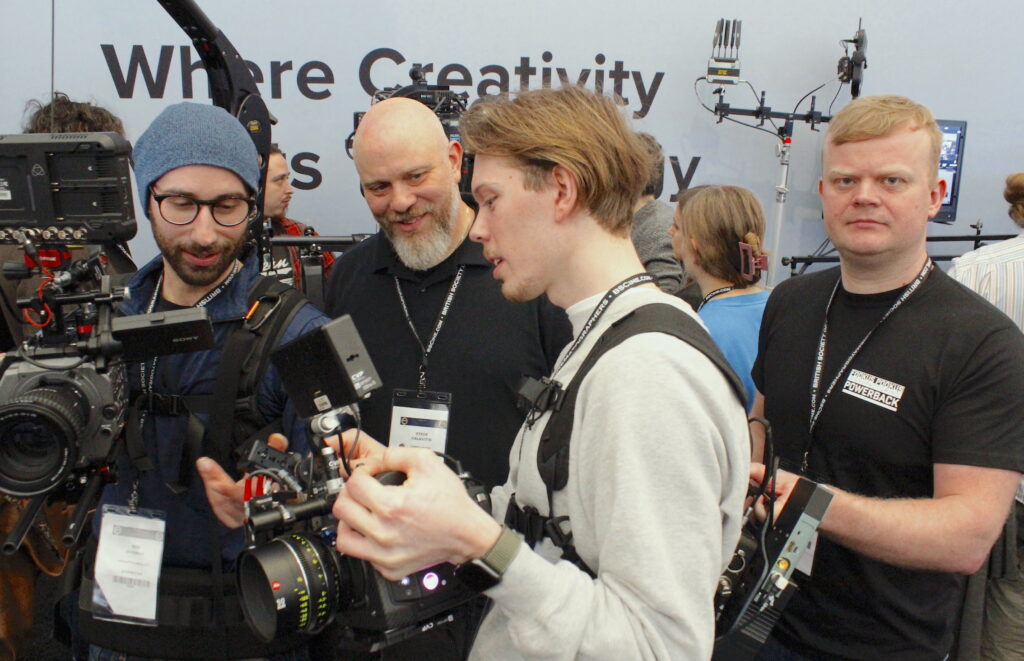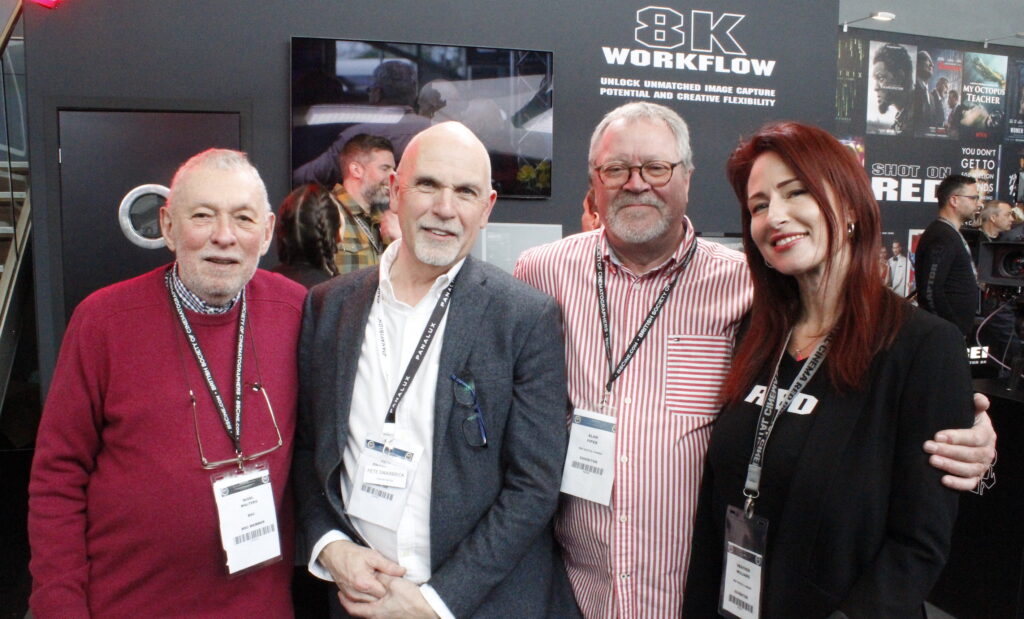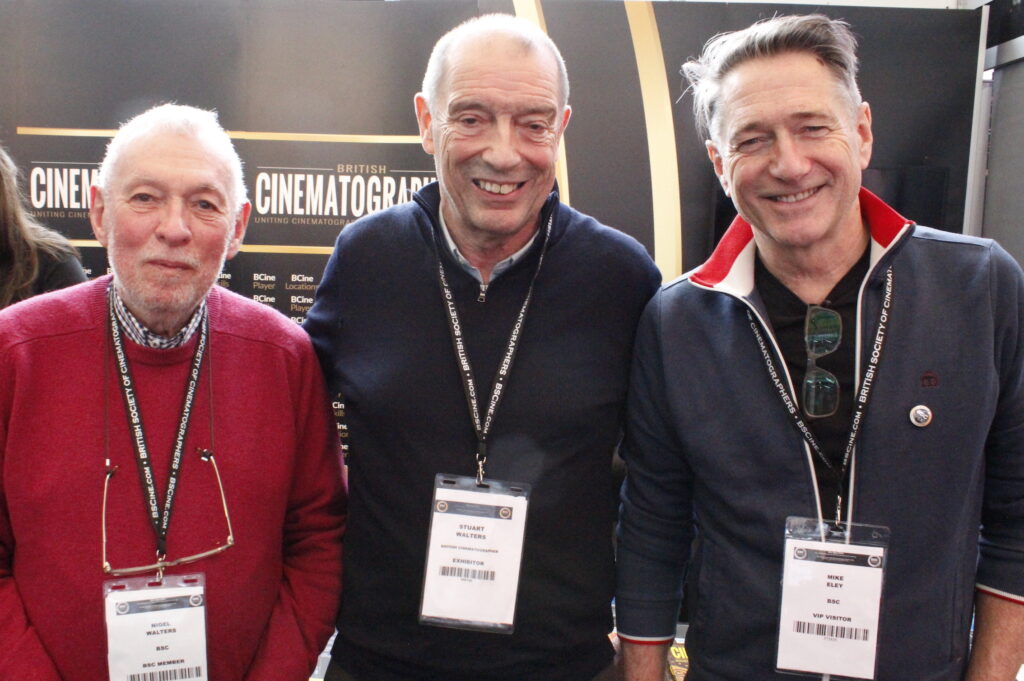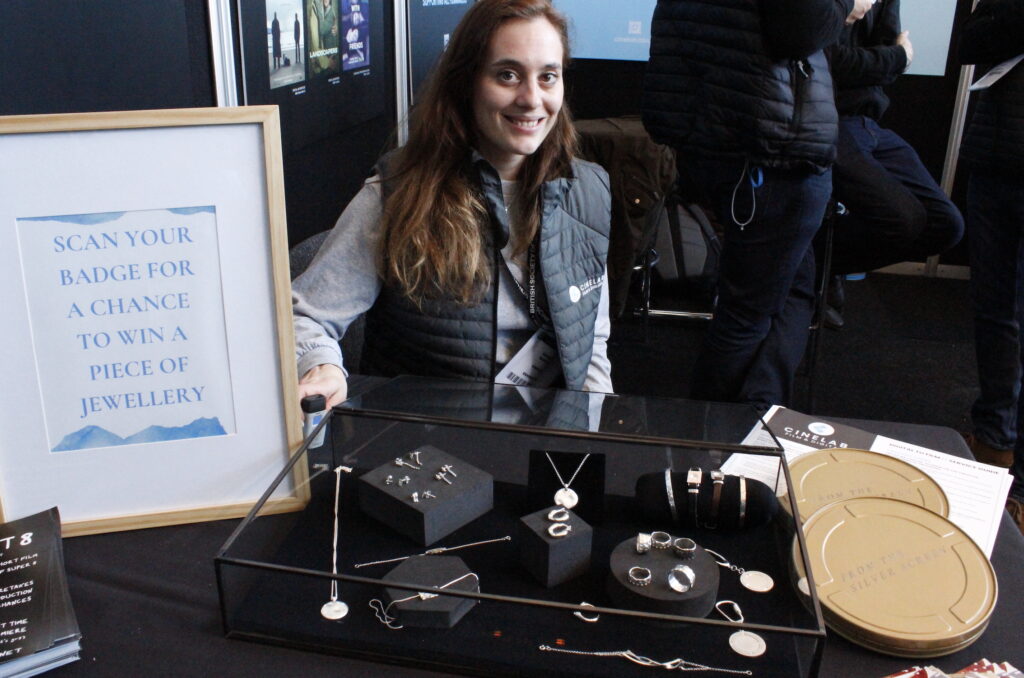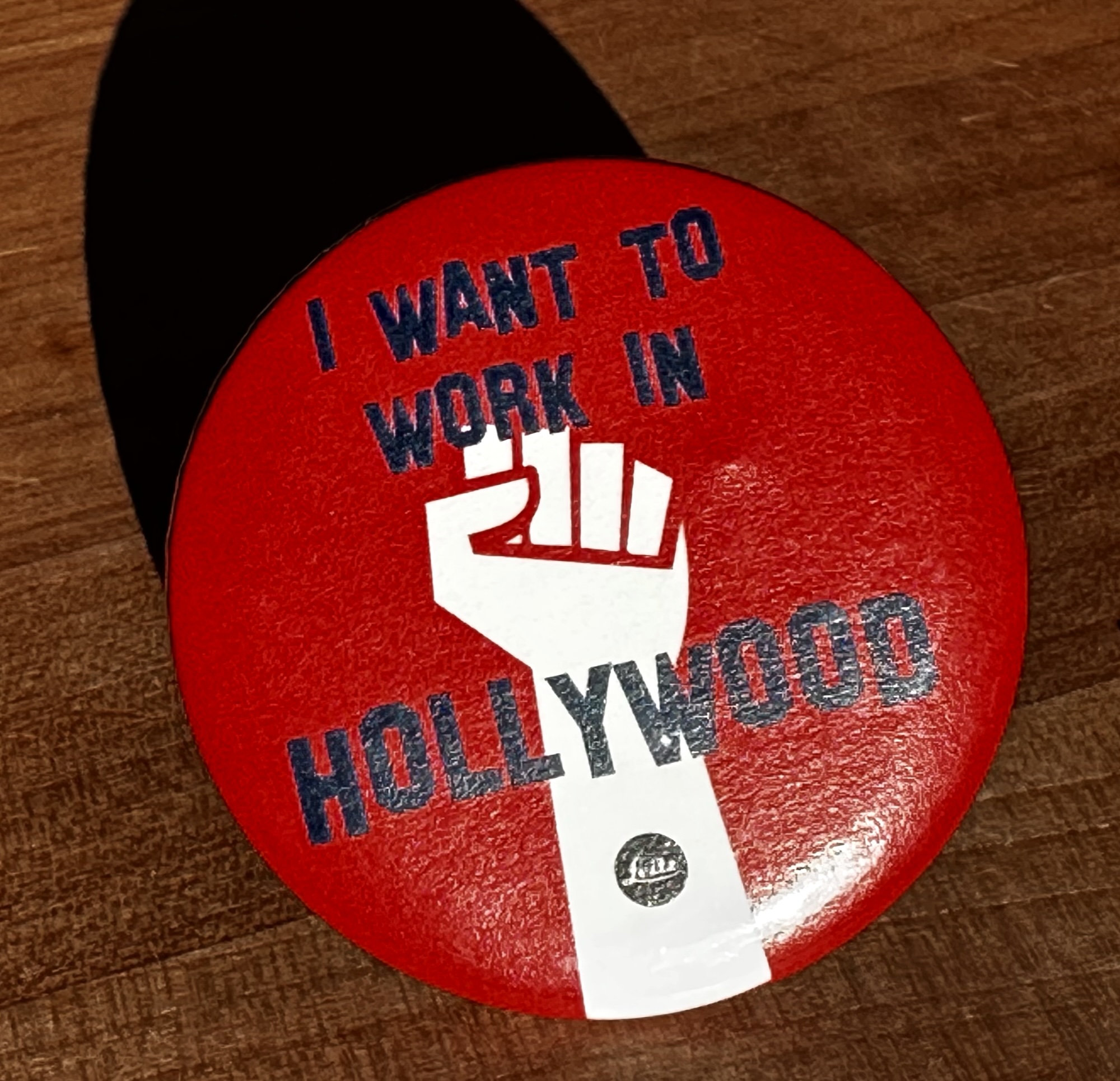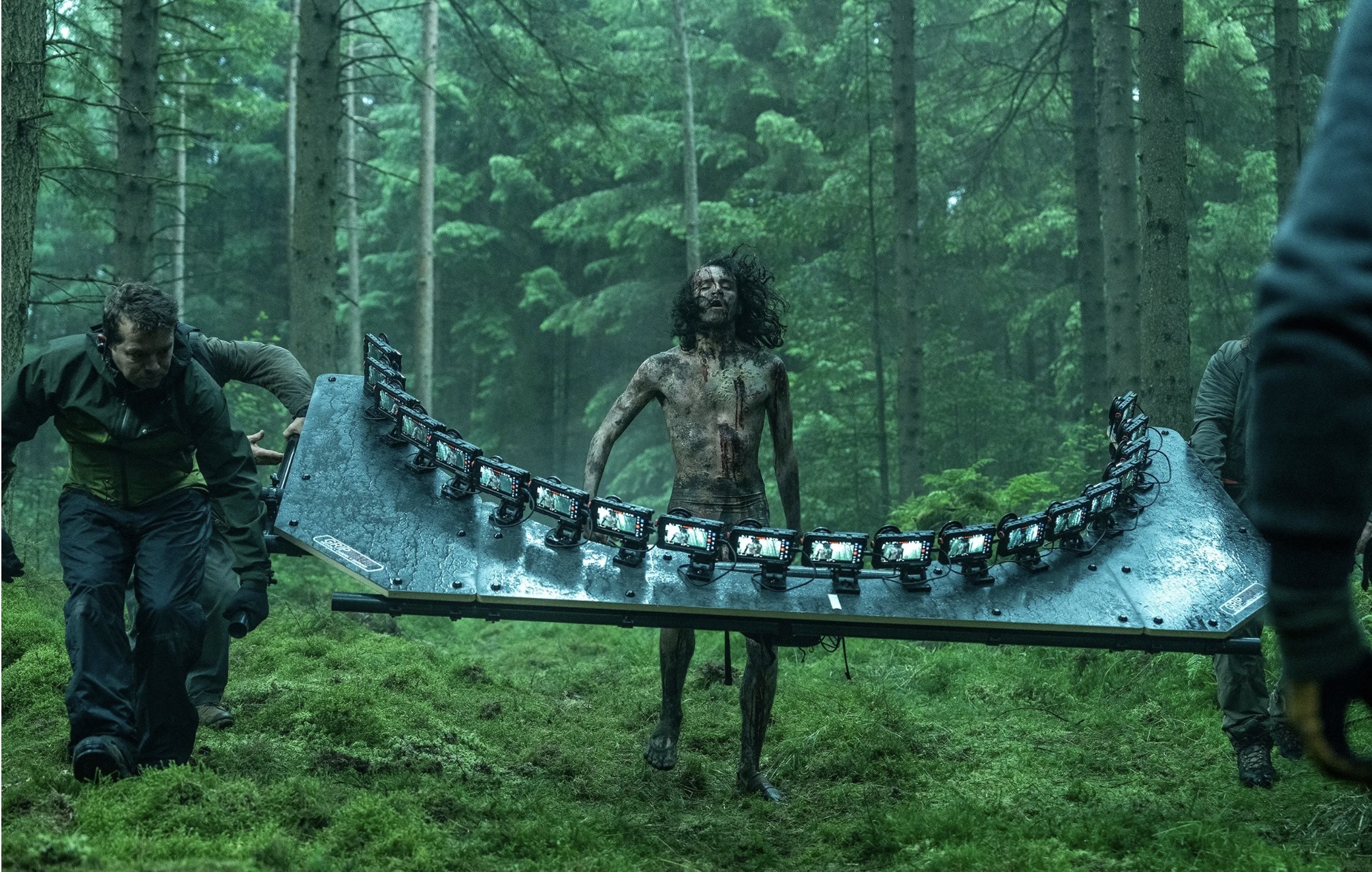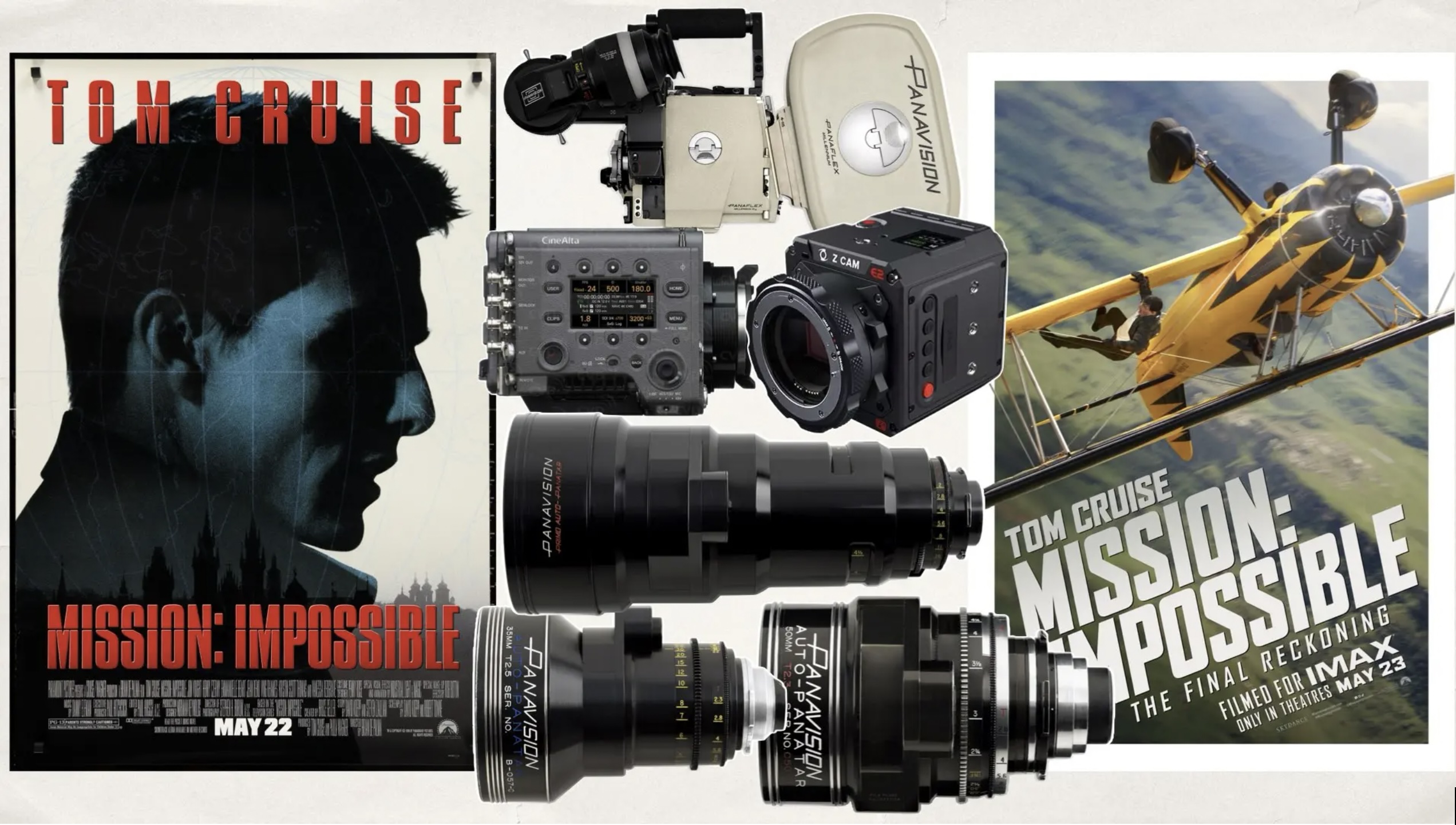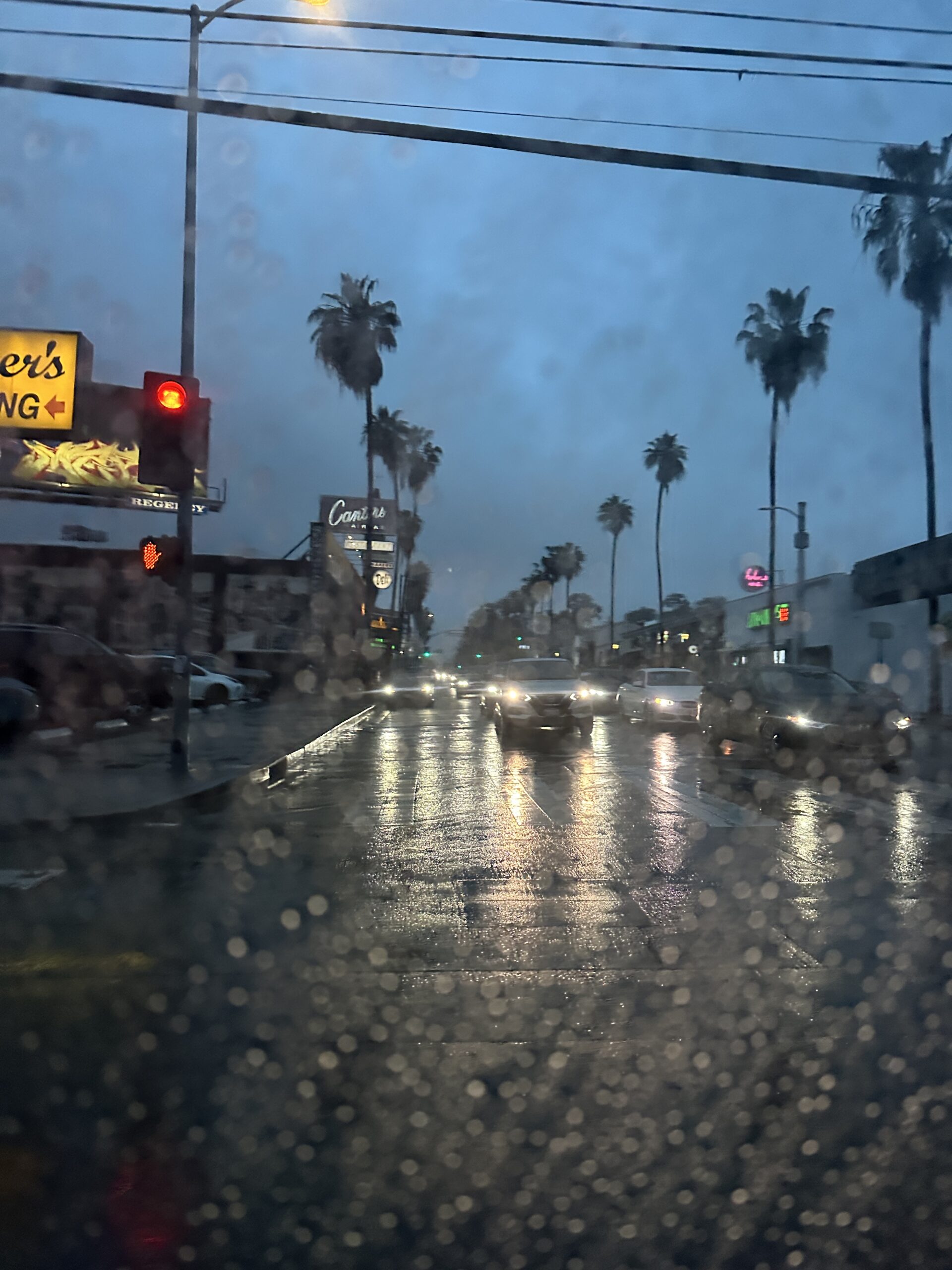BSC Expo 2023
Always enormously popular, welcome and of course a joy to visit, the 2023 BSC Expo -Europe’s premier international event for Film & TV production equipment & technology- took place between February 23rd and 25th at the London Battersea Evolution, thus moving up closer to its traditional time slot very early in the year, as compared to last year’s Expo which was in April owing to it being the first BSC Expo since the Pandemic broke out. Of course having the Expo very early in the year is beneficial since normally there aren’t massive amounts of productions up and running just yet at that time.
Thursday featured a special VIP evening at the Expo, offering specially invited guests a chance to stroll around without the company of thousands of other visitors. It gave us a chance to take the whole exhibition in and to decide what products we wanted to delve into a little more in detail when returning to the show on Friday-Saturday.
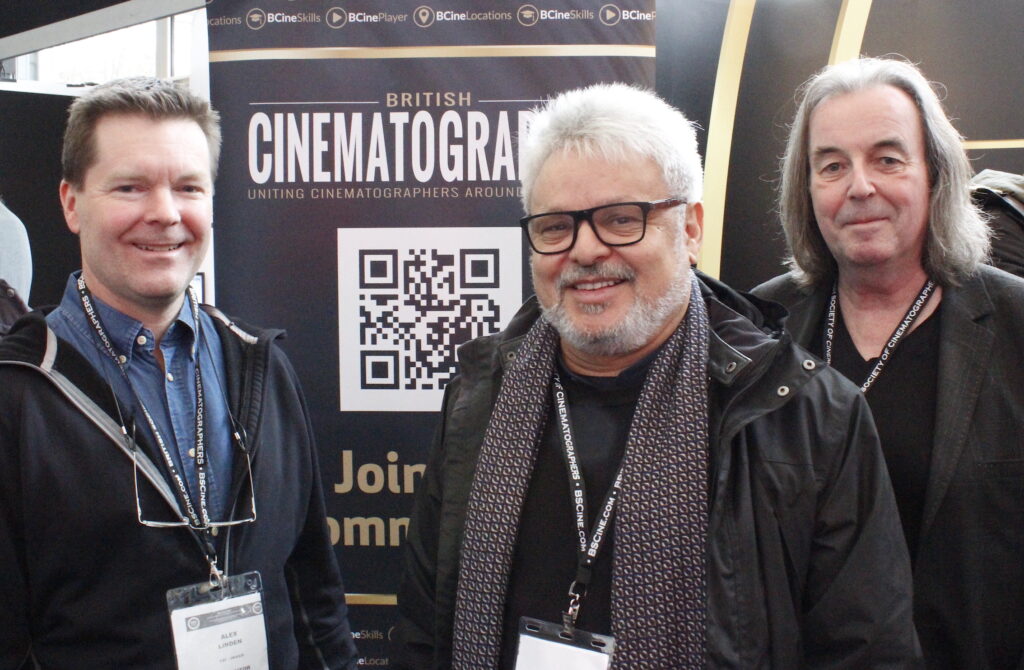
Happy campers! From left to right; Alex Lindén FSF, Mustapha Barat ABC and Pelle Mellqvist FSF honorary member.
Messieurs Lindén and Barat are General Secretary and President respectively, of IMAGO, the international Federation of cinematographers. Mr Mellqvist is the CEO of Cameraten, Sweden’s premiere camera rental house. And what could be more fitting and natural than to meet at the British Cinematographer stand?
Through no one’s fault other than my own, planned accommodation for this trip fell through at the last moment and so I scrambled to find an affordable hotel, no mean feat when the BSC Expo is going on. I found what I was looking for up close to Paddington station, and going to bed Thursday evening I found out MY ROOM was VERY MUCH on top of Paddington station, or at least one of it’s subway lines. The room shook like an earthquake every three minutes, but I had a good night’s sleep just the same, I was sufficiently tired.
Friday started out in a very novel and interesting way, as the driver of the Sloane Square shuttle bus lost his way and drove past two or three bridges over to Battersea Park, so we finally ended up entering the park from the Albert bridge side, which meant a long walk on foot through the park. No matter, the weather was beautiful, so we were fine.
If you, like myself, have spent significant time in the past prepping important commercials or features, chances are you have been schlepping a heavy tripod-mounted camera around, trying to hit ”exactly two metres” but ending up at 1,98 …and that was something to be happy about. Well the MYT Works Lens Test Systems have made that a nightmare of the past, and the company is represented here at the Expo by Mr Etienne Sauret who, as our guide here today, will be kindly demonstrating their products to us.
Their most recent offspring is the Compact Standalone Unit, actually seen TWICE with Etienne in this photo! The one in front is ceiling-mounted and in the background we have one floor mounted, which of course can be moved around any way you like, if you’re a busy rental house and floor space is at a premium.
MYT Works is pronounced ”mighty works” and they manufacture every single last bit of their lens test systems themselves in their shop. And with the company motto being ”Born out of Frustration” you know you are dealing with someone who’s in your ring corner!
The bestselling MYT Works Standard Optiglide is usually ordered to be ceiling mounted -which means that everything below it is clear- and versions from 15 to 40 feet can be installed with hand crank or motor. You can also move the chart or pedestal manually as well, and it will show you the distance from the film plane to the chart. And all MYT Works Lens Test Systems are equipped with digital readouts, making laser metering a thing of the past.
It’s possible to mount two charts and two pedestals on one track, so you can check two cameras at once without losing real estate. The idea is like having four railroad cars on the same strip of track, with the two in the middle being the charts and the cameras pointing towards one another.
The Compact standalone unit is perfect if a busy client needs to check twenty lenses fast, you can just bring this extra lens test system up and now they have two systems to work with and can cut down the time it takes to do all the checks. MYT Works can also ship a Compact standalone unit to a production shooting at a remote location who want to check lenses fast. Say they’re in a remote forrest somewhere and need to make sure their lenses can be trusted, Etienne and his crew can just supply a Compact standalone unit on location.
We could’ve used the headline ”why hasn’t anyone thought of this before?” to introduce this next product. This brilliant little backpack rig from Fookus Pookus Manufacturing is demonstrated by Siim Kaarel Saluri and Arvid Tampuu who run an Estonian rental company and were asked about a year ago by one of their regular DoP customers to ”get rid of everything of weight” on a camera for an assignment. Siim and Arvid then came up with the brilliant idea of creating a small backpack on to which everything goes that basically only adds weight to a camera. And Steve Calavitis from Camera Nordic has every reason to look this happy since his company is the Swedish retailer for this amazing new product.
So does the operator have to get in and out of the harness every time he or she wants to sit down and take a break? No, all the stuff on the backpack sits on a separate plate that detaches with a quick-lock in a second.
Seen here also in full Easyrig mode is Ben Burman, a freelance cameraman helping out his friends in the ProGear Ltd booth for the day. Ben is exchanging experiences with Arvid who’s wearing the Fookus Pookus vest, since Easyrig and Fookus Pookus are basically both addressing the same problem of how to make everyday production less of an ergonomical hazard.
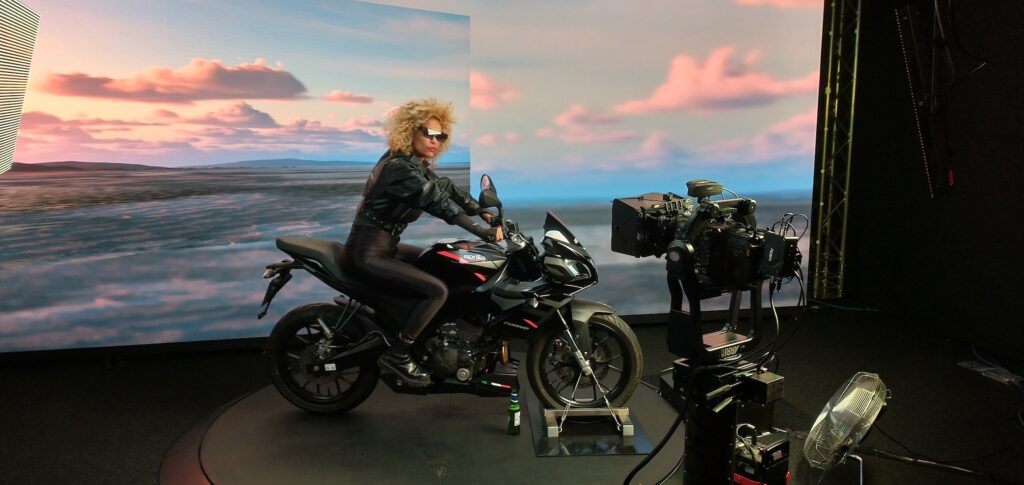
Virtual Production is fast becoming extremely ubiquitous in the movie and TV industry and the company Disguise are showcasing a complete virtual production stage at the BSC Expo, consisting of a LED wall and four Kino Flo Mimic LED lights. ”All these five units are fed the same virtual environment information and they can all then be mapped in our Disguise software as a 3D environment which we can control remotely”, Milo Hancock Disguise’s representative here explains. ”All of our camera feeds are also fed into our Disguise software to create a complete virtual production stage. There are just under four hundred mixed reality or virtual production stages spread out over the world for which Disguise have supplied the hardware and software”.
Disguise is actually an over twenty years old company which started out in Rock’n’Roll live performance, supplying effects for bands like U2 when playing giant stadiums. Distributing video content over a LED surface is the company’s bread and butter. ”We’ve become a market leader in Virtual Production over the last couple of years”, Milo proudly announces.
The backdrop here is a 6 * 3 meter and 2,5 pixel pitch modular LED wall which can be built in half a day. For cinema production it’s usually preferred to have a LED ceiling as well, but here they’re just using LED lights. For Extended Reality purposes they will also add a LED floor as well, so the actors can stand in a fully immersive environment.
”Using regular screen material and Barco projectors is a different tool”, Milo continues, ”you get better contrast and color fidelity With LED lights, and you can actually light the actors with the LED units. You can use Game Engines to generate the 3D content. Most cinema applications, like car shots, will use 2D content though. If you use a plate car with eleven cameras, those images can be pre-stitched together and used directly on the V.P. stage, or the footage could be fed into the Disguise software to generate 180° front and rear environments to use on the virtual production stage”.
One field where V.P. can save a lot of time and money is for location re-shoots. Say you went to an exotic location with your production and upon coming home and editing you find out you needed more shots from that location. Well if you did a 3D scan of the place you shot in, you don’t need to fly the whole crew back there, you can just feed the environment into a virtual production stage and do your reshoots there.

Stepping outside the Battersea Evolution building for a nip of fresh air and some welcome rest for one’s eardrums(!) there are numerous vehicles parked there representing all aspects of movie production, from lighting to plate photography. The company Drivingplates.co.UK. specializes in shooting plates for scenes with moving vehicles, they’ve worked on high-end productions like ”The Irishman” and ”Joker” (both 2019). Here to demonstrate their Mercedes Benz plate shooting car is Steve Brand and he explains the ins and outs of this particular trade. Eleven cameras are shooting simultaneously from a rig attached with suction cups to the car, simulating what the people in a moving car would see out the windows when riding in it. Inside the car, in the back seat, an array of all eleven views can be seen on a big monitor. Right now the camera rig is on the roof of the car, which would be about right for scenes involving a SUV. For scenes simulating regular cars, obviously the rig needs to be attached lower down, and that begins to involve legal restrictions. You’re not allowed to drive on an open road in the UK with anything obstructing the driver’s view, so such footage must be shot on closed-off roads.
And Steve describes one such very interesting Danny Boyle shoot, where they created a nearly mile-long cortege consisting of police cars in the front and back and other 1970s period production cars and the plate shooting car sandwiched in between, creating a ”rolling closed down” motorway. Traffic was closed down in front of and behind the cortege, but since the whole thing was moving, the hindrance to regular motorists was minimal, and the whole cortege got off the motorway in less than half an hour.
The trio seen in this photo, Nigel Walters BSC, Pete Swarbrick from Panavision and Alan Piper from RED, accidentally met in the BSC Expo foyer and immediately began to reminisce about how they all started out in the British film industry in the 1970s. These three gentlemen are joined here on the right by Miss Heather Williams, also from RED. Perhaps not so surprisingly, Miss Heather Williams was NOT active in the UK film industry in the late 1970s.
The ubiquitous Nigel Walters BSC could next be seen catching up with Stuart Walters from British Cinematographer Magazine and former BSC President Mike Eley BSC.
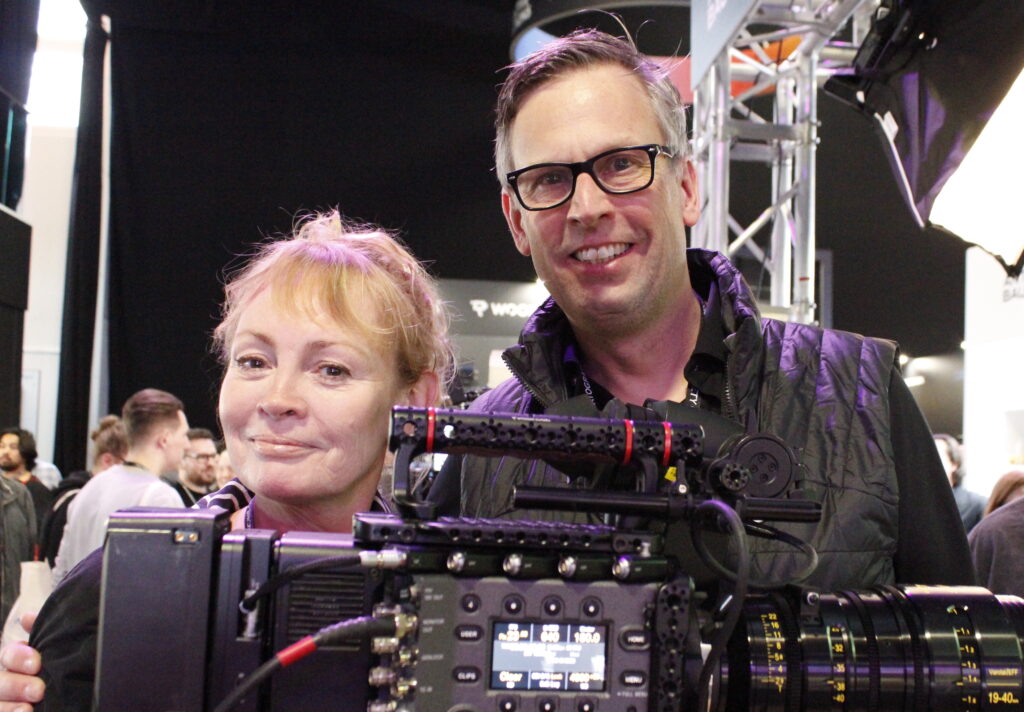
Cinematographer Ingrid Domeij FSF GBCT can be seen here with Anders Johansson from Mediateknik AB in the O’Connor booth, a popular product for which Mr Johansson is the Swedish retailer.
A delightful state of affairs for celluloid buffs is the fact that there are classic analogue film cameras everywhere and the Cinelab and Kodak booths are bristling with activity. Especially the Kodak booth seems to grow larger and larger for every year, which is a good sign for anyone who values celluloid as a capture and distribution medium. The Cinelab stand offered a particularly delightful feature as Miss Natalie Daniels of FromTheSilverScreen.co.UK demonstrated jewellery she has designed and manufactured made out of silver recycled from the processing of film stock at Cinelab. For our younger readers who may not be so familiar with how celluloid capture works, the images are created when light hits an astronomical amount of randomly distributed microscopic silver halide crystals spread out over three layers of light sensitive emulsions, reacting to red, green and blue respectively. That’s why amazing color reproduction and resolutions up to 12K on 65mm stock are possible with celluloid.
The people in the OCTICA/MarCam booth (or bar, really, rather than booth) also deserve a special honorary mention for good coffee, great hospitality and a wonderful tendency to gratuitously handing out cold bottles of beer to dehydrated visitors. AND you can overhear small talk from real Hollywood insiders at the bar counter if you keep your ears open.
